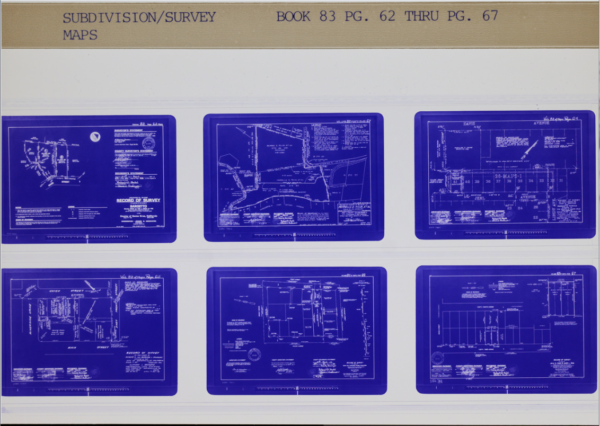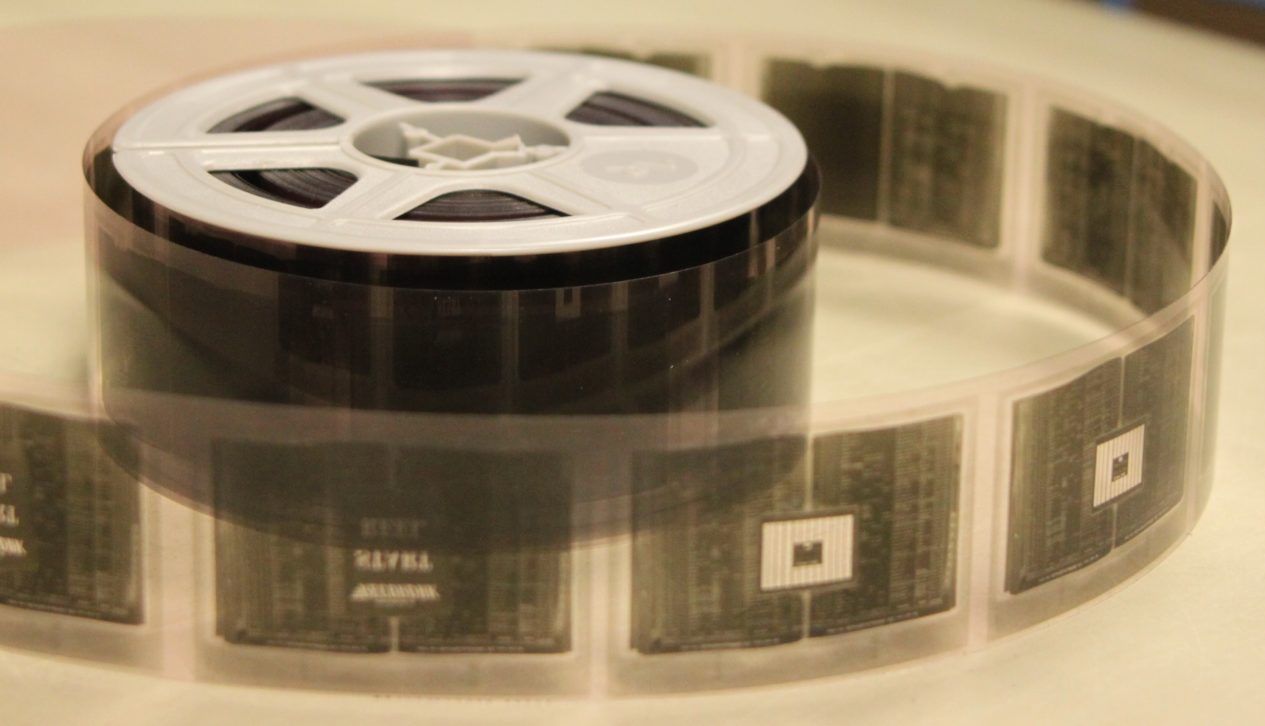There are two reasons why you’d need to know about microfilm: one, you’re doing a research project for school. Two, you have microfilm.
Yes, we’re partly joking about the above and there are other reasons why you may want a general understanding of microfilm, but we’re probably not far off the mark with the two that we listed.
Either way, we’re glad you’ve found our post and hope that you take away a bit of knowledge about microfilm, one of our favorite mediums for record preservation.
Check out the video below for a
slightly different spin on this topic!
7 Things You Need To Know About Microfilm

1. Microfilm Has Various Types
The first thing you should know is that the word “microfilm” is most often used as a catch-all term. Microfilm is the most commonly used word when describing microforms, the various types of media that are created using micrographics equipment to make small, eye-readable images out of original hard copy or digital documents.
The three main microform types are 1) microfilm, 2) microfiche, and 3) aperture cards. And within each type there are various sub-types such as 16mm microfilm, duplex microfilm, 35mm microfiche, COM microfiche, and vertical-channel 16mm aperture cards.
It can be confusing, and that’s why most folks just say “microfilm” when they have records on any of these types of media. To see the variations of microfilm and take a look at pictures that illustrate the differences, head to our page that answers your question “what kind of microfilm do I have?”.

35mm Microfiche

16mm Duplex Microfilm

35mm Aperture Card
2. Microfilm Has A 500-Year Shelf Life
Microfilm has been a great way to store information because of its longevity. If properly stored and handled, it can even last up to 500 years.
This may not sound that impressive, especially if you say that you might have a piece of paper that can last that long, or a PDF that will be around forever. That may be true.
But microfilm is different. Your paper files might stick around for awhile if properly stored, but they take up a lot of space! A standard banker’s box of office-sized files can hold about 2,500 pages – one roll of microfilm can store the same number of images. And you can fit ~90 reels of microfilm in that same bankers box.
Using a direct comparison of one to the other, you can hold 2,500 paper sheets in a bankers box, or 90 rolls of microfilm (225,000 images). One bankers box of microfilm holds 90 times the number of images as a box of paper!
And sure, PDFs and other electronic media will be around for the foreseeable future, but with microfilm you don’t need to have a computer, phone, or device of some sort to read the information. Microfilm is eye-readable, and the most technical piece of equipment you might need to read it is a magnifying glass. Even if you have a digital copy, sometimes a hard copy off-site backup can be great in case your system goes down, especially if your data is required to be maintained for retention purposes.
3. Microfilm Can Deteriorate And Decay
If you’re storing or using microfilm, you should make sure you’re storing it properly so that you get the longest use possible out of it. Microfilm can and will start to deteriorate if it’s not maintained in the right way.
Many things contribute to microfilm decay, and the most prevalent are poor storage conditions and heavy use. Poor storage includes hot and humid temperatures where the microfilm is located, leaving the film exposed to light, and keeping the film in areas where other chemicals exist (such as a storage room with paint, for example). Using the microfilm can’t really be stopped, because that’s the point of having the information available. But if your organization uses the film regularly, or if you have customers that use it (like at a library), keep an eye on its condition and consider creating a duplicate backup copy or digitizing your collection.

4. Microfilm Can Be Converted Into Digital Images
Like paper files, microfilm can be scanned and converted into digital images. With the many benefits that microfilm provides, having a digital copy of your data can be extremely useful. By digitizing your microfilm, you can have faster and easier access to the records; increased security by adding permission-based access to the images and data; you’ll have two copies (the microfilm hard copy and the digital copy) in case of a disaster; and you don’t have to physically handle the microfilm or reader-printer hardware machines anymore!
If you’re thinking about digitizing your microfilm, you don’t need to be overwhelmed by the many options available. You can start by taking a look at our comparison between a “traditional” microfilm conversion (scanning to PDFs or TIFs) and our Digital ReeL solution.

35mm aperture card frame scanned and shown in a digital format
5. Microfilm Is Still Being Created Today
Yup, there are still organizations that want microfilm for their recordkeeping. Most of the ones that are getting microfilm are doing it because of regulation or statute (such as a state requirement to have an eye-readable copy of the records), while others get it because they believe that microfilm is the best archival medium for storage and longevity.
Whatever it is, it’s pretty amazing that microfilm is still being produced today when we look at all the technology and other options around us. There’s something to be said for simplicity.
Do you need microfilm? You may want to check out our Microfilm Digital Archive (“MDA”) application if you’re thinking about creating microfilm records.
6. Microfilm Is An Unchangeable Media Format
Ok, you can cut out a frame from the roll of microfilm or sheet of microfiche, create a new one and splice it together, but it’ll be pretty obvious to anyone with experience in the microfilm world. The point is that the image itself can’t be changed, so it’s great for documents that are used for official reference.
7. Microfilm Was Invented In 1839
Just an interesting fact, we’ve been using it for 180+ years.
The guy who invented it is John Dancer.
Next Steps
Reach out to us today! Click the “Get Your Quote” button below, fill out the form, and we’ll quickly reply to you to discuss your project.
Further Reading
If you’re interested in learning more about microfilm, and specifically microfilm scanning and digitization, take a look at some of our other articles about the subject.
“The BMI Microfilm Scanning Process” describes our 10-step method of scanning your microfilm. You should know what happens to your microfilm when you work with a scanning company!
“How To Choose The Right Microfilm Scanning Partner” gives you our thoughts on the subject and some ideas about what to keep an eye out for when deciding on a scanning partner.
“The History Of Microfilm” provides you with more detail about microfilm’s past and where it’s headed in the future.

